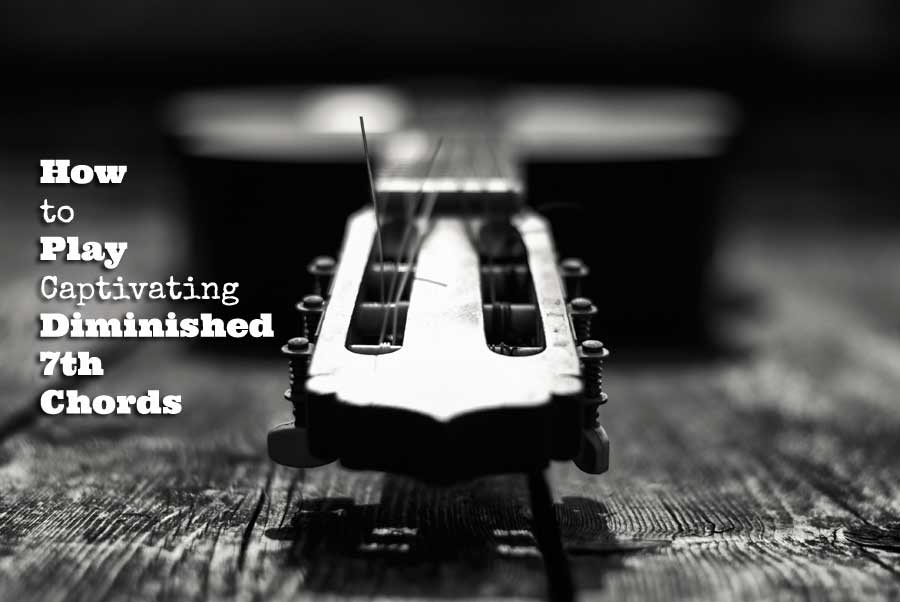 The diminished 7th chord is used a lot in jazz music but also in pop music you keep bumping into them. Songs like “Michelle” by the Beatles, “Who says” by John Mayer, “Friends in low places” by Garth Brooks, “Road trippin'” by the Red Hot Chili Peppers, “My sweet lord” by George Harrison and “God only knows” by The Beach Boys are just a few of many popular compositions using diminished chords.
The diminished 7th chord is used a lot in jazz music but also in pop music you keep bumping into them. Songs like “Michelle” by the Beatles, “Who says” by John Mayer, “Friends in low places” by Garth Brooks, “Road trippin'” by the Red Hot Chili Peppers, “My sweet lord” by George Harrison and “God only knows” by The Beach Boys are just a few of many popular compositions using diminished chords.
Diminished chords are considered “dissonant” because of their tonal instability. They create a sense of tension and drama, and have a strong drive toward tonal resolution, meaning that, they want to move to a more final and stable sound (consonance). This is why they are often used in music, they can make a song more captivating, stirring, and charismatic.
The Dim Chords
There are different types of diminished chords: There is the diminished (dim) chord, the half diminished chord (m7♭5) and the diminished 7th chord (dim7). The diminished chord itself is not used very often, the half diminished and diminished 7th chord are more commonly used.
Dim Chord Analysis
Compared to a minor chord (1 – ♭3 – 5), the diminished chord has a flat 5th (♭5), the half diminished chord adds a flatted 7th (♭7) on top of that, and the diminished 7th chord adds a double flatted 7th (♭♭7).
Here are the chord formulas:
Major chord = 1 – 3 – 5
Minor chord = 1 – ♭3 – 5
Diminished chord = 1 -♭3 -♭5
Half diminished chord = 1 -♭3 -♭5 -♭7
Diminished 7th chord = 1 -♭3 -♭5 -♭♭7
Let’s take C as the root for example:
C major = C – E – G
C minor = C – E♭ – G
C dim = C – E♭ – G♭
Cm7♭5 (half dim) = C – E♭ – G♭ – B♭
C dim7 = C – E♭ – G♭ – B♭♭ (or simply “A”)
How to Play Diminished 7th Chords
The diminished 7th chord is made up of minor third intervals. That means all the notes are three semitones (3 frets) away from each other. This specific feature of the chord makes it possible to move the chord 3 frets up the fretboard each time and the chord will remain the same.
We start with a dim7 chord shape played on highest four strings. As you can see below from left to right, we move the diminished chord shape 3 frets up each time. Start the chord shape on the 1st fret, then move up to the 4th fret, the 7th fret and finally the 10th fret. Of course, you can move it up as far as you like. Continue Reading
